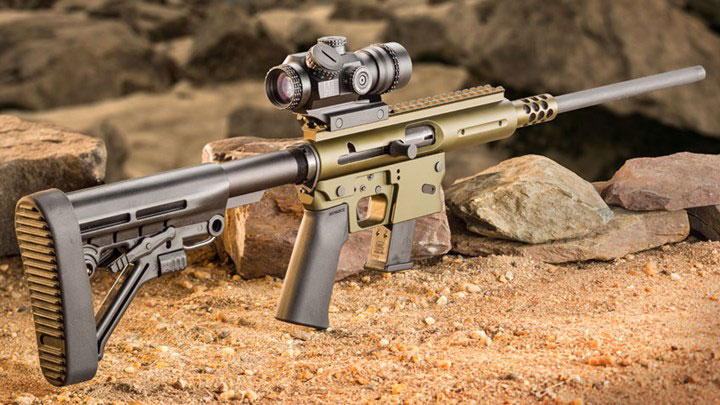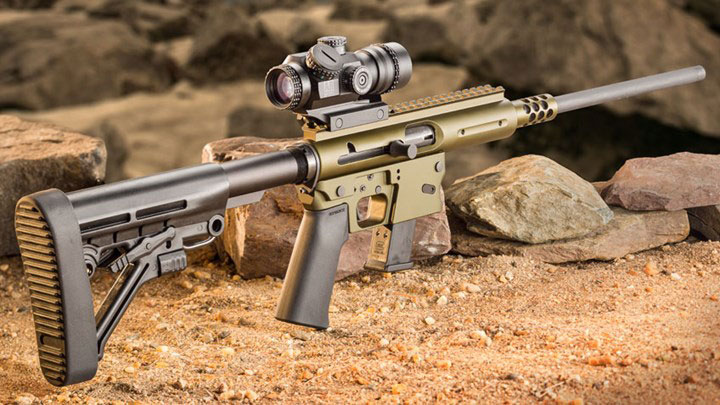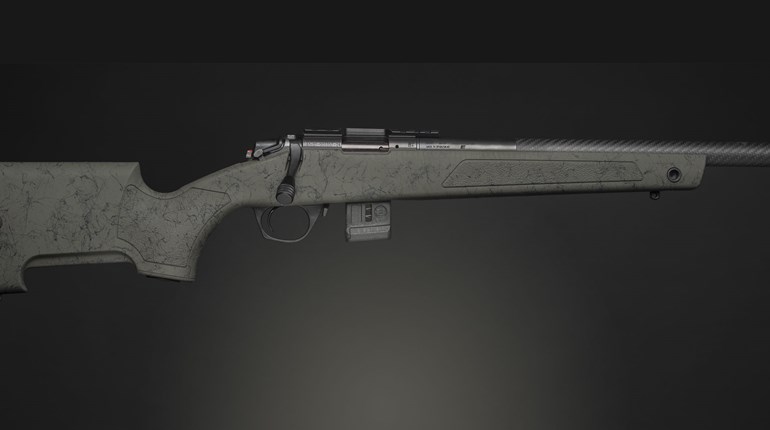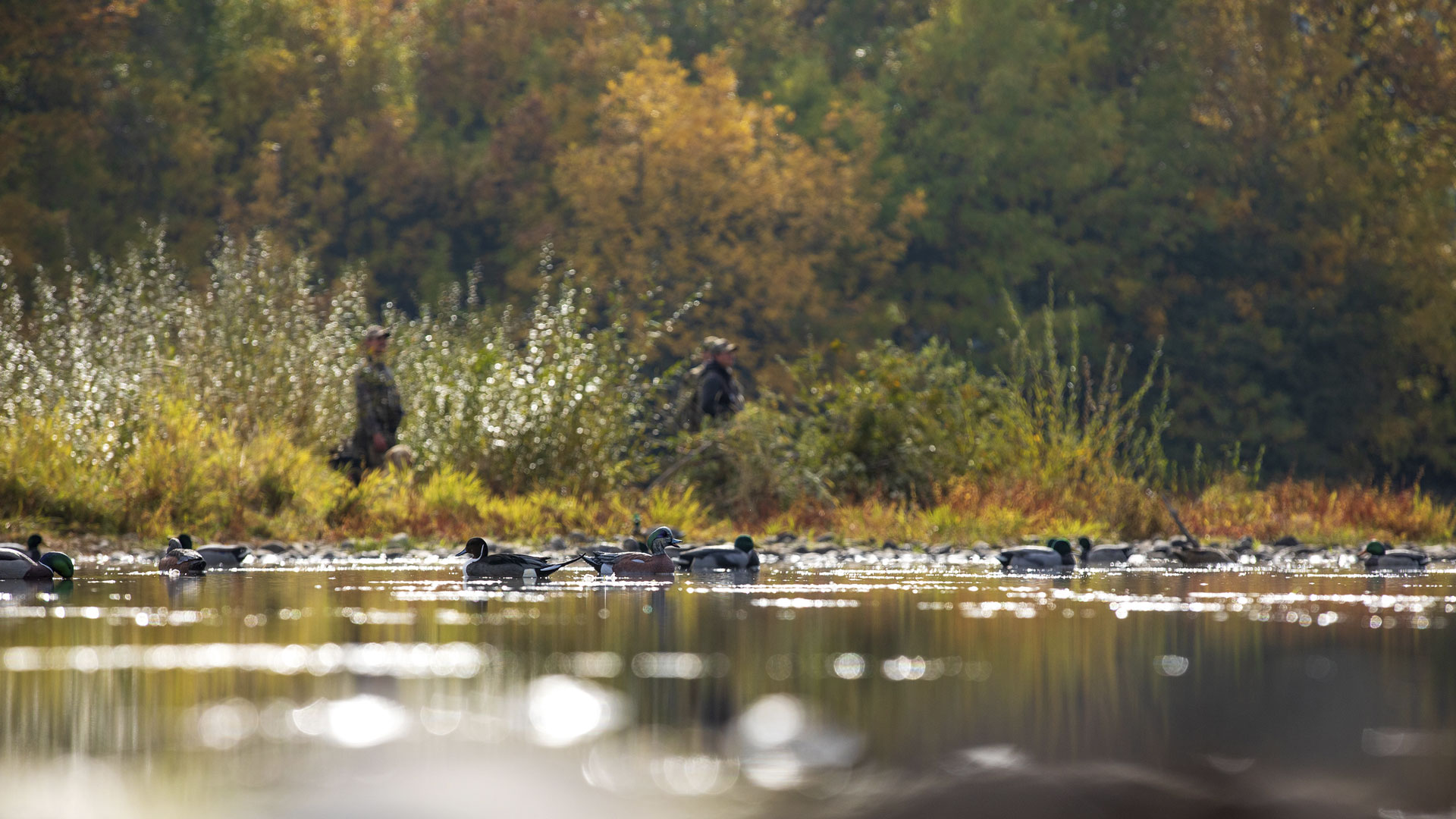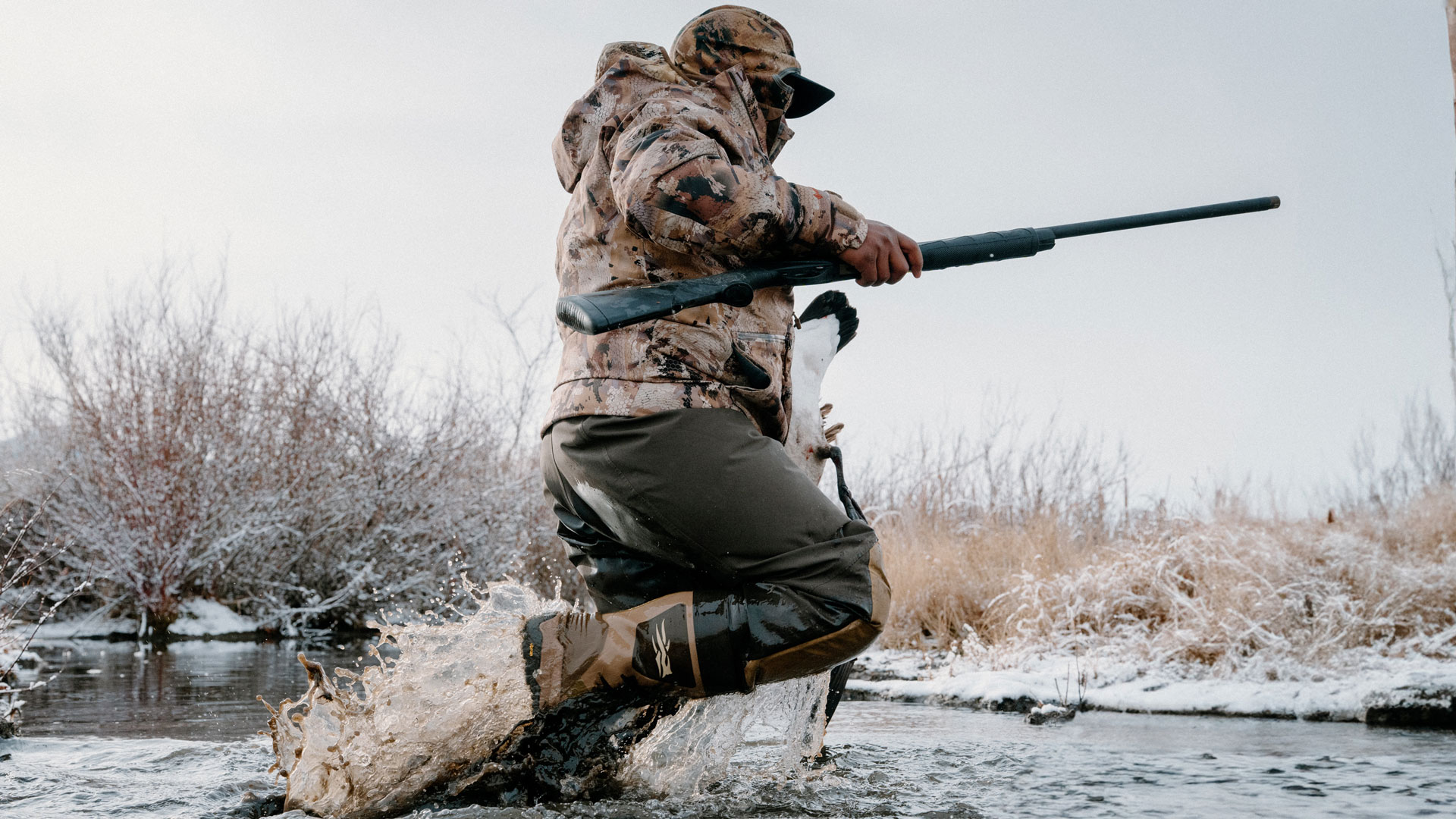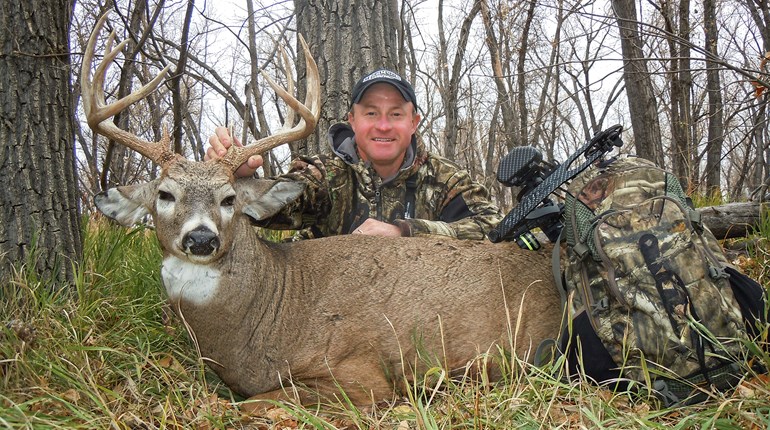
“If a man will live his life in pursuit of dangerous game, there will always be that little spot waiting for him on some hillside, possibly under a great fig tree, that will be the price he will pay. And there are some of us who will find that price not only fair, but downright cheap.”
—author unknown
Others, sheep hunters for example, will talk of the majesty of the day, the difficulty of the climb and the view from the top. All wide and expansive memories.
Dangerous-game hunters boil it down; their memories are more focused, refined, condensed and a lot more intense. When describing a hunt, most hunters talk of great days. The dangerous-game hunter speaks of great moments.
■ ■ ■
The shot felt good, but the leopard is gone. What remains is a bloody trail leading into the thick mopane forest.
It’s black dark now. Armed only with a rifle, a flashlight and a PH I don’t much trust, I bend down to peer into the brush. I can see that the blood trail goes on at least as far as the light can move the dark out of the way.
I am scared a little, only a fool would not be, but a stronger, much deeper emotion is the excitement of trailing up one of the most volatile and dangerous wounded animals on earth.
I suspect that’s what defines a dangerous-game hunter. Not the lack of fear, that doesn’t happen, but the excitement and the willingness to move forward and see what happens next.
I am certain that it tracks back to a time long ago when early humans, just like modern-day rabbits, were a prey species. Humans were simply not equipped to defend themselves. Let’s face it: Even today we would lose a hand-to-hand fight with just about any species of animal of equal size or larger. The best heavyweight MMA fighter would not last long against a predator like a jaguar, leopard or lion. Bears, wolves, crocodiles—they all win.
■ ■ ■
The air was still that Zimbabwe morning, and we had carefully infiltrated the bedded herd of buffalo. We moved slowly and with great caution, pausing with each new buff to glass.
I felt a slight breeze on the back of my neck, just as the world exploded. Buffalo were crashing in every direction, including mine. Dust was filling the air as I ran to a large termite mound and climbed to the top. I stood there, one arm around the mound, my rifle in the other and both feet barely holding to the sides, as what may well have been every buffalo in sub-Saharan Africa ran under me.

A few yards behind me they hit the small wash we had used to cover our approach. The buffalo bottlenecked trying to get up the steep and narrow trail on the other side. As dozens or perhaps hundreds of them fought for position, the air was filled with dust which glowed bright with the backlighting sun. The buffalo bellowed and moaned and threw clods of dirt into the air. Even as they jammed to a standstill, more and more buffalo were running past me and filling that wash with tons of anger issues. Until at last, the wash appeared to be one large, writhing organism created out of buffalo.
Back in the day there were predators that lived off humans. It’s said that the dinofelis evolved to become the perfect man-killing predator. The dinofelis was a 300-pound cat, about the size of a modern-day jaguar. It had overdeveloped front shoulder and leg muscles and large canine teeth top and bottom that were spaced just right to span a human skull. What was a man to do against such a predator? Throw a punch or a kick? Try for an arm bar?
■ ■ ■
The African night was receding as we approached the waterhole, but it was still too dark to see tracks. A baboon started barking to our left, protesting loudly because we would dare to invade his domain. Like a sleeping neighbor awakened by a loud party, a lion off to our right began to growl back a surly “get off my lawn” response. The two bickered back and forth as I made my way behind a termite mound to answer nature’s call.
A large, sleek lioness was slinking through the brush like a smoky specter. She passed by me so close I could count the individual whiskers on her face.
I froze, hoping she wouldn’t notice me, but she stopped, made eye contact and stared into my quivering soul for a few lifetimes. Then the big lioness turned and walked on toward the baboon.
Even beyond predators who wanted to eat humans, most of the larger species would also stomp and gore humans that were perceived as a threat. I suppose it didn’t matter if you were eaten by a cave bear or stomped by a mastodon, either way you were dead.

Humans may not have been equipped with fangs or claws, but they did have something all those other critters did not: opposable thumbs and a larger brain. Humans created their own fangs and claws by using tools.
It’s thought that humans first used tools about 2.5 million years ago. It’s not certain when they first used their assets to make weapons, but it is logical that they quickly figured out if they hit something with a big rock or a large stick, it did more damage than their fists. That evolved to penetrating weapons such as spears and the bow and arrow.
■ ■ ■
We were engaged in what many experienced African hunters believe is the most dangerous hunting on earth. In the thickest brush, working through a herd while looking for a legal tuskless elephant.
What we didn’t count on were the other elephants we hadn’t noticed. Suddenly there was trumpeting and crashing off to our left, where our scent was blowing.
It is surprising how an old, fat guy can move when the proper motivation is applied. I had at least 20 years and 30 pounds on anybody else in the party, but they didn’t have to worry about me keeping up.
These elephants were too close and gaining all the time. It was so thick that visibility was measured in feet at best and inches at times. I couldn’t see them even if I had cared to waste the time and energy to look back, but I could hear every thundering step, every crashing tree and soon every breath they took.
We crossed a small opening in the brush and stopped at the far end. The PH turned to face the elephants and I knew this was where we would make our stand. He had simply been looking for enough open space to give us some chance of shooting our way out of trouble. My rifle hit my shoulder and the safety clicked off. I waited for his lead and planned to shoot as soon as he did. This was a plan with a low probability of success, but I was not about to quit with a cold barrel.
What saved us were the other elephants.
We had actually run back at the herd we had been hunting and spooked them. They ran off, and the elephants that were chasing us mistook them for us and followed. Without even wasting time to catch our breath, we quietly beat it down our back trail and got the hell out of Dodge.
It was, to say the least, an exciting introduction to elephant hunting and it was only the first morning!
Humans also developed tactics due to their ability to learn. One man with a spear was still at a disadvantage. But if that one man could lure the predator into a trap where it could not escape and if there were multiple men with spears, well then, the tables were turned. Now humans became predators.
■ ■ ■
The elephant bull spotted us and turned to come for a closer look. He stopped at 17 yards to stare at us. I kept my crosshairs on his head and I whispered to the PH that I thought I could make the brain shot, but he told me to wait.
Then the decision was made for us when a young calf broke from the herd and ran at us, being young, dumb and curious.
“Shoot now!” Ben said just as the bull started to charge.
The bull moved his head just as I broke the trigger and the bullet missed the brain by a few inches.
The 500-grain slug rocked him back on his butt, but it didn’t drop him. He turned, blocking his head, so I hit him again shooting for the off shoulder, driving a .458 solid through his massive body. I cranked the bolt once more in what seemed like slow motion, but as he spun, all I had was his butt, so I waited. Ben fired; the bull went partway down and swung his mighty head to the right. His body blocked my shot as Ben tried another brain shot and missed. That enraged the bull and he turned to come back at us. He was digging at the earth with his front feet and throwing a massive amount of dirt and leaves into the air as he screamed and clawed his way to us.

I shot through his neck, shattering the spine and his off shoulder. That finished it, but I worked around behind him and put an insurance shot through the top of his head. As they say, it’s the dead ones that kill you.
After that, I tried breathing again.
Before the use of tools humans lived their lives in fear of the predators, and everything they did was influenced by that fear. Once man developed tools and strategy to deal with and even eliminate the large predators, the world changed.
That resulted in a much more efficient lifestyle, allowing humans time to explore their intellectual superiority. They developed societies, built cities, highway systems, hospitals and the Internet. Humans developed wonder drugs, and sent men to the moon. This all was possible because they found a way to deal with the large predators that were using humans as a food source.
The dinofelis? It became extinct about 1.2 million years ago.
■ ■ ■
It was cold that day in Hungary. I could hear the dogs in the distance as a large wild boar emerged on the game trail, uphill from me and on the other side of a stand of saplings.
He was winded and mad. There were several little dogs harassing him as he tried to catch his breath. I finally found an opening, but was just a bit late on the trigger and I hit him too far back. At the shot he turned to me and charged. He ran around the saplings and gained an amazing amount of speed on his downhill run.
As soon as he cleared the trees I found the junction of his neck and shoulder with the red dot and fired. He fell and skidded to a stop, so close that he sprayed snow over my legs.
The instinct to hunt is in all humans, although the modern urban dweller tamps it down until he pushes it from his psyche, leaving scars behind.

Those who choose to hunt find that the urge grows strong. For a few it matures into a hunger to hunt dangerous game.
I think this is due in part to a deeply buried little bit of DNA that has been passed down from ancestors who battled bears with stone weapons and prevailed. While it was survival for them, the truth, I suspect, was that some of them truly loved it.
■ ■ ■
“Whack him!” We let this bear get too close and now he was coming for us on a dead run. The urgent voice behind me was spouting good advice, but I hesitated.
He was a very good brown bear, probably just on the downside of 9 feet and considered a shooter under any other circumstance. But it was early in the hunt and he was not quite what I wanted.
We had been watching a female bear feeding on one of the tidal flats for nearly an hour before the boar showed up and came a-courting.
We used the distraction to move in a little closer and finally wound up behind a huge boulder that was about 10 yards from the edge of the woods.
It wasn’t long before the female had enough of this guy and she ran into the thick woods to find some peace. The boar watched her go and then turned down a worn path that would have him pass us close enough to touch him.
Chris said, “We’d better let him know we are here.”
We stood up from behind the big rock as Chris slapped the top to get the bear’s attention before backing away behind me. The bear saw us and instantly charged.
I saw something change when Chris shouted. I let up, just a little, on the trigger and waited. I was gambling on a hunch, guessing that the bear saw the movement and thought we were the sow he had been chasing. I don’t think he wanted to eat us, but I do think he wanted to breed us. When Chris shouted, the bear realized his mistake.
The boar stopped, much too close, and looked at us long enough for me to begin to reconsider. Then he let out a loud huff and ran into the woods.
If you truly love dangerous-game hunting, then you understand that it is these moments that define everything.
So what is dangerous-game hunting? In many minds it’s the African big five. I suppose that’s a good start. I would sooner define it as game that has the tools, ability and the willingness to stomp, bite, gore, claw or bludgeon you to death.

Certainly that will include the big five: elephant, buffalo, rhino, leopard and lion. I think we can safely add grizzly bears, including the coastal brown bear. Polar bears, too, although hunting for them is very limited. Black bears? Wild hogs? They both damage a lot of people every year. Hippos, particularly when hunted on land, can be extremely dangerous. Crocodiles kill a lot of people. Hunting them has its dangers.
I might even include moose at times.
■ ■ ■
This moose was as big as he was mad. We had worked our way between him and a cow in heat, and my guide was grunting out a challenge like a rival bull. The moose closed the gap fast, infusing the area with testosterone and anger as he thrashed the trees and grunted warnings. When he stopped for a second, I fired. The bull charged instantly. I worked the bolt on the borrowed gun and it jammed up so tight Thor and his hammer could not have freed the action.
I shouted for the other hunter to shoot and when he did the bull dropped to the tundra a scant few yards in front of us.
I love to hunt. That includes just about anything that is legal to hunt. I have tried most of it and found nothing I wouldn’t do again. But if you asked me what I love to hunt the most, I would say dangerous game. It’s a pursuit that is horribly expensive. I was born poor and my thirst for hunting dangerous game has ensured I’ll die poor. It’s a fair price.
■ ■ ■
I had seen the bull’s leg collapse before he recovered and ran off. We stood silently thinking what nobody wanted to say out loud, that the shot might have hit him too low.
A bellow came rolling down the hill and with it the trackers started grinning, believing it was the death bellow. Then it grew louder and rose in intensity until it became this anguished scream that sounded not like death, but rage.
Suddenly two buffalo came charging down the hill, headed at full speed straight for us. We stood in the open, the nearest trees too far to reach. The lead bull was spraying blood out of his mouth and his side and the bull following had blood all over his horns. It wasn’t my bull, so I waited. But there were limits. My gun was up and my safety off and I had about an ounce left on my trigger when the .416 roared beside me. The bull stumbled and the PH’s .458 Lott spoke so fast that the two shots sounded like one. The bull hit the ground at full speed and skidded to a stop, throwing a cloud of dust and dirt into the air.

The second bull broke off and ran a short distance before stopping to glare back at us. The angle was not perfect, but I knew it would work. I hit the bull, and at the shot he started to run. I tuned out the rest of the world and went to the place where I always shoot best. The bolt ran smooth and fast and the next shot was off before I could think about it. The solid struck him through the ribs, the third was even faster and that one caught a shoulder. The bull went down behind a small hill covered with trees. I ran around the hill, reloading on the run, and as I cleared the trees the buffalo was getting back on his feet and focused now on me. I hit him again and worked the bolt, following him with the crosshairs as he hit the ground so hard he bounced. I hit him one last time through the spine and out the bottom of his chest.
It was over, but it takes a bit of time to refocus the mind and realize it’s done. The moment had passed and now it was exclusively mine forever.










